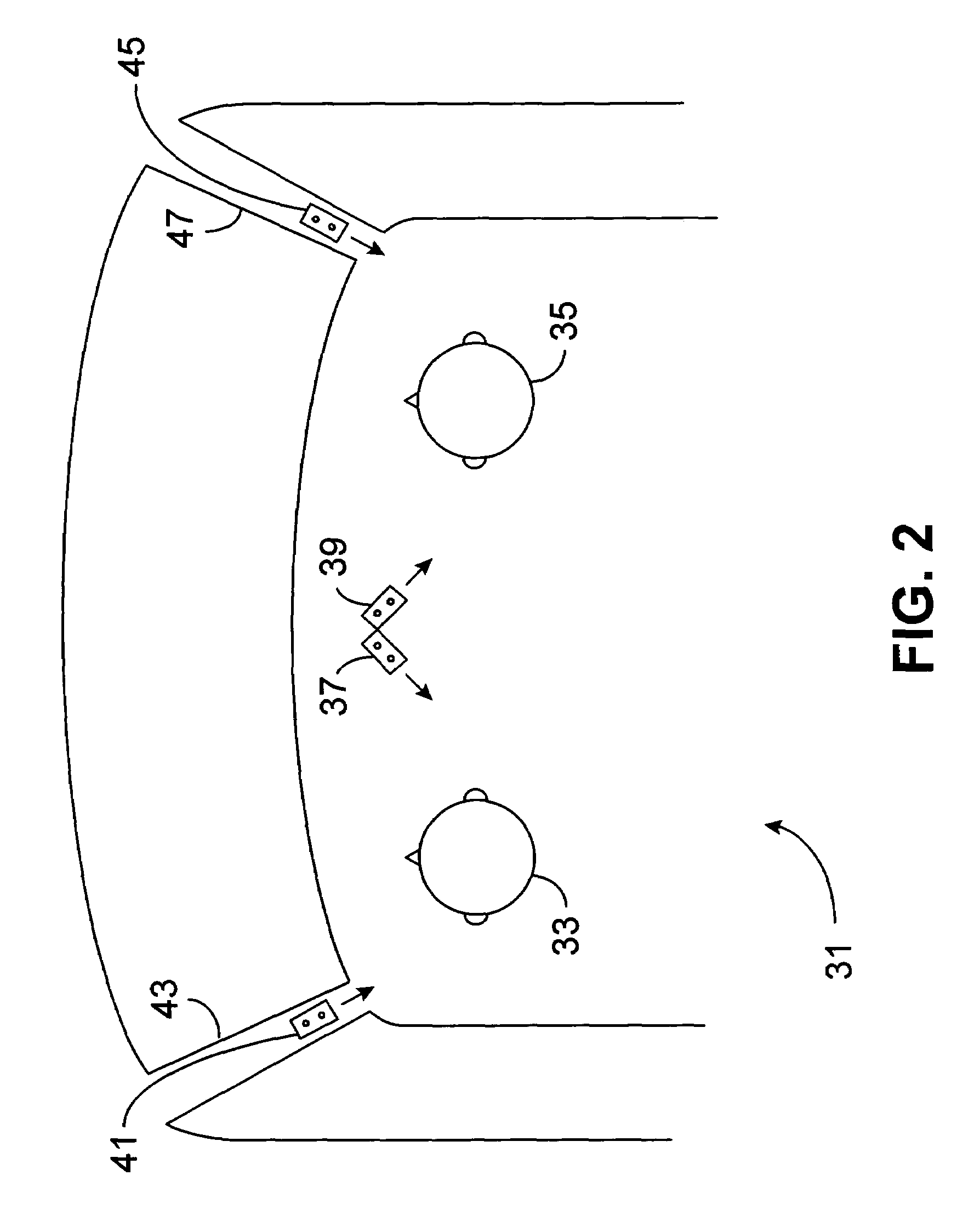Directional microphone assembly for mounting behind a surface
a microphone and surface technology, applied in the direction of electrical transducers, piezoelectric/electrostrictive transducers, transducer types, etc., can solve the problems of large pressure differences at the microphone elements, general overlooking or not fully addressed, etc., to achieve simple acoustic impedance to the opening, less sensitive, and larger pressure differences
- Summary
- Abstract
- Description
- Claims
- Application Information
AI Technical Summary
Benefits of technology
Problems solved by technology
Method used
Image
Examples
Embodiment Construction
[0037]FIG. 2 illustrates a typical application for the present invention. A partial top view of a vehicle cabin 31 is shown with a left-hand driver 33 and a right-hand passenger 35. For right-hand drive vehicles, the driver and passenger positions are interchanged. A microphone assembly 37 of the present invention intended for speech pickup for hands-free telephony and other communication and control applications is shown mounted to and behind the cabin interior trim roof headliner or behind the surface of a headliner-mounted accessory console. For a telephony application, the assembly should generally provide a well-controlled directional pattern and frequency response over a frequency range of approximately 300 Hz to 3 kHz. For applications such as speech recognition and in-car speech reinforcement, useful response may need to extend to 5 kHz or beyond, but with some relaxation of directional pattern accuracy being acceptable. Within the constraint that the directional pattern mus...
PUM
 Login to View More
Login to View More Abstract
Description
Claims
Application Information
 Login to View More
Login to View More - R&D
- Intellectual Property
- Life Sciences
- Materials
- Tech Scout
- Unparalleled Data Quality
- Higher Quality Content
- 60% Fewer Hallucinations
Browse by: Latest US Patents, China's latest patents, Technical Efficacy Thesaurus, Application Domain, Technology Topic, Popular Technical Reports.
© 2025 PatSnap. All rights reserved.Legal|Privacy policy|Modern Slavery Act Transparency Statement|Sitemap|About US| Contact US: help@patsnap.com



